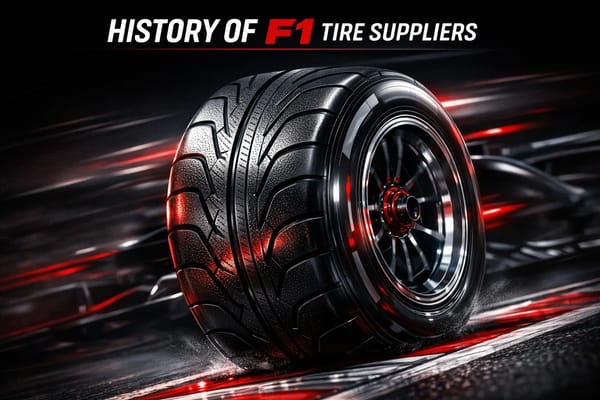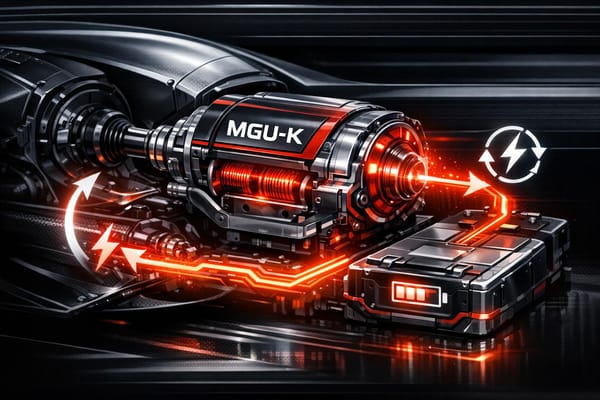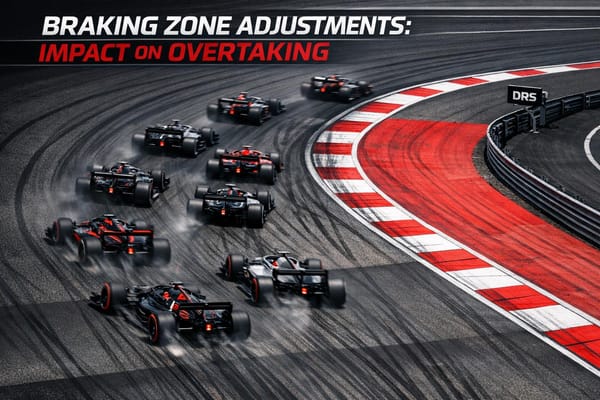Rookie vs Veteran: Performance Trends in F1
Explore the contrasting performance trends between rookie and veteran drivers in Formula 1, highlighting strengths, challenges, and future implications.
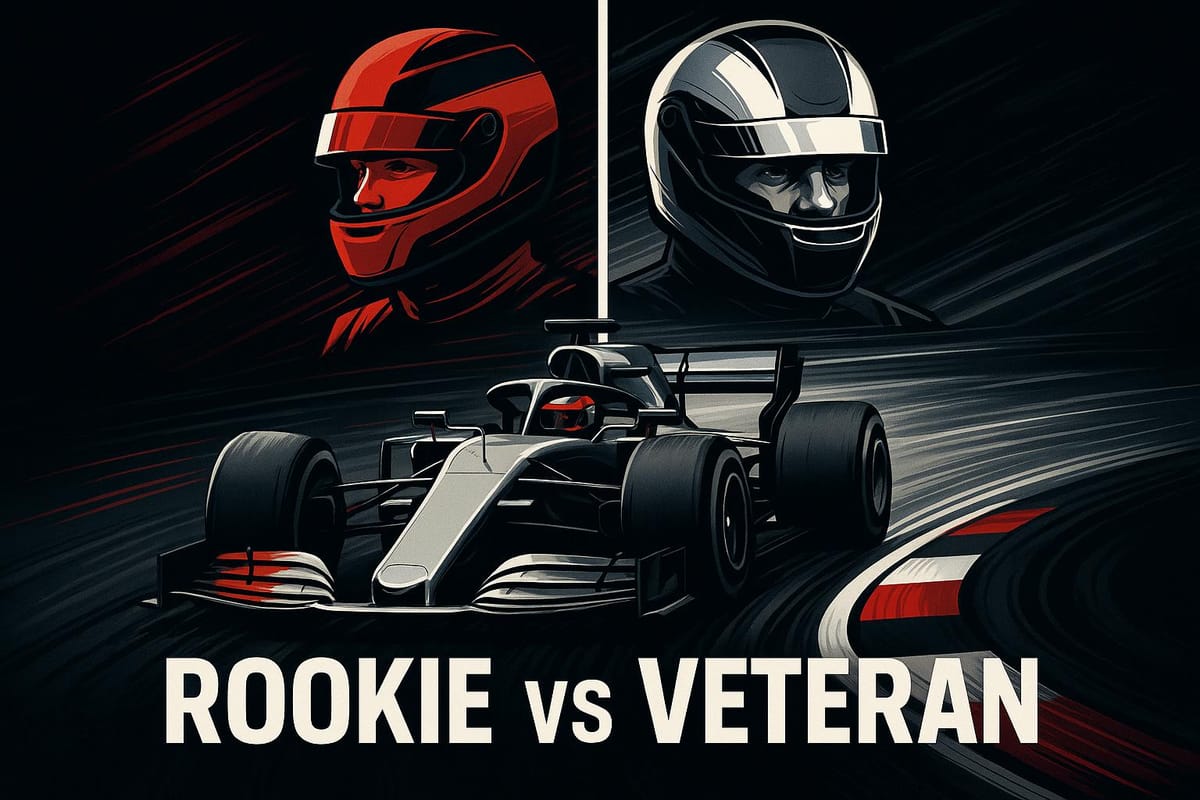
In the 2025 Formula 1 season, six rookies joined the grid - the highest number in over a decade - sparking comparisons between their performance and that of seasoned veterans. Teams are balancing fresh talent from junior series with experienced drivers who bring stability and race strategy expertise. Here's a quick breakdown:
- Rookies: Show strong qualifying speed but struggle with race consistency. Examples include Kimi Antonelli (64 points, youngest pole-sitter) and Isack Hadjar (22 points, 8 Q3 appearances).
- Veterans: Excel in race management, tire strategy, and consistency. Drivers like Lewis Hamilton demonstrate how experience leads to reliable results over time.
Key metrics like qualifying positions, race results, and retirement rates highlight this divide. Teams often pair veterans with rookies to combine raw speed with reliable racecraft, as seen with Mercedes’ 2025 lineup of George Russell and Kimi Antonelli. This dynamic approach is shaping F1’s future as teams aim to maximize both short-term results and long-term development.
I Used Data To Find The Best 2025 F1 Rookie
Driver Development and Team Selection Strategies
Rookies and veterans take very different paths in Formula 1, and teams must carefully balance new talent with seasoned experience. Let’s dive into how these strategies shape performance on the track.
Training and Development Routes
For rookies, the journey usually starts in junior formulas like F3 and F2, often supported by driver academies such as Mercedes'. These programs combine cutting-edge simulation tools, real-world racing opportunities, and guidance from experienced mentors. Take Kimi Antonelli, for example - his development in Mercedes' system highlights the effectiveness of this approach. Similarly, Isack Hadjar’s seamless transition to Racing Bulls in 2025, bolstered by strong qualifying performances, showcases how a structured training program can enhance consistency and adaptability on the grid.
Veteran drivers, on the other hand, focus on staying sharp by adapting to new technologies and evolving regulations. While rookies work on mastering the basics, veterans fine-tune their racecraft and keep up with the latest advancements in car performance.
FIA Rules and Team Strategy Effects
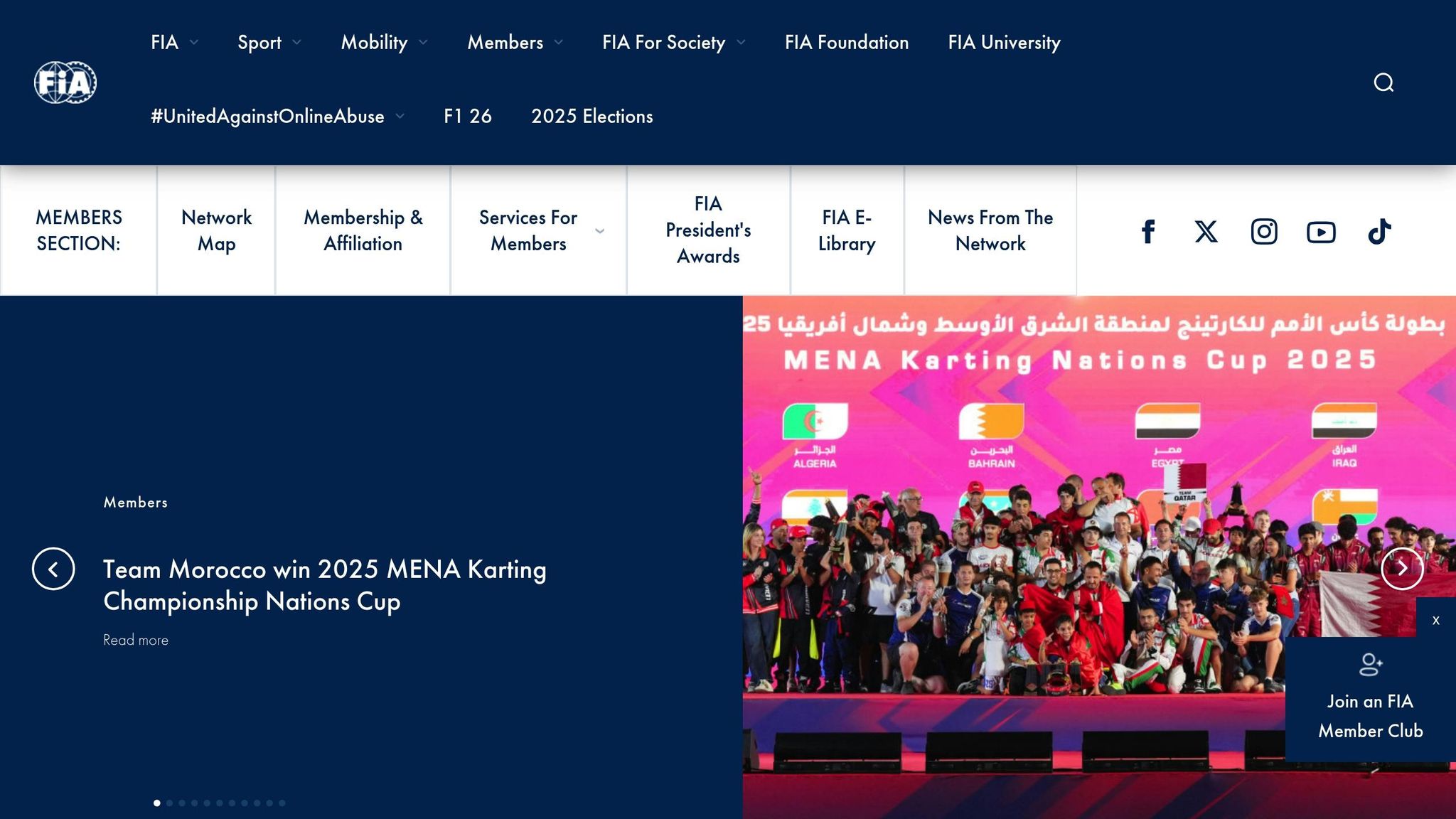
FIA regulations, like mandatory rookie practice sessions, add another layer of complexity to team strategies. Teams must balance compliance with these rules while evaluating talent for both immediate and future success. A great example is Mercedes’ 2025 pairing of rookie Kimi Antonelli with veteran George Russell. This combination allowed Russell’s technical know-how to complement Antonelli’s raw speed and adaptability, creating a dynamic partnership.
These strategic pairings highlight the different pressures rookies and veterans face. Rookies must prove their worth quickly, while veterans are tasked with maintaining their high standards and adapting to changes.
External Pressure Factors
Media attention and sponsor demands further amplify the challenges for both groups. Rookies often face intense scrutiny for their marketability, while veterans must safeguard long-standing sponsorships and reputations.
Team decisions are also heavily influenced by commercial interests. Sponsors might prefer rookies for their appeal to younger fans or veterans for their proven reliability. For instance, Red Bull’s approach to Liam Lawson illustrates how a driver’s junior-category success and marketability can shape team strategy.
When multiple rookies join the grid, the pressure on teams increases. The 2025 season, which featured six rookies, tested the resources of teams like Haas and Sauber as they juggled rookie development with their pursuit of higher positions in the constructor standings.
Experts often point out that a balanced lineup - pairing veterans with rookies - offers the best of both worlds. Veterans provide stability and mentorship, while rookies bring fresh energy and adaptability. Teams like Mercedes and Red Bull have demonstrated how different approaches to lineup management can yield success. However, external pressures, from media to sponsorship obligations, continue to shape how teams integrate experience with emerging talent.
Performance Data: Qualifying, Racing, and Consistency
The data highlights some compelling distinctions between rookies and veterans in Formula 1, focusing on qualifying pace, race-day performance, and overall consistency. By examining these areas, we can better understand how experience - or the lack of it - shapes outcomes on the track.
Qualifying Speed Comparison
When it comes to qualifying, raw speed often takes center stage. For instance, Kimi Antonelli made history as the youngest F1 pole-sitter at just 18 years and 251 days, with an average qualifying position of 9.21. Isack Hadjar, another rookie standout, averaged a qualifying position of 9.93 and achieved Q3 appearances eight times in 2025 - an impressive feat, especially as the only rookie not eliminated in Q1 that season.
These numbers show that rookies often arrive with sharp one-lap speed, a testament to their preparation and natural talent. However, veterans tend to approach qualifying with a more calculated mindset. They might not always push for the fastest lap but instead focus on consistency and minimizing risks. This strategic approach often pays dividends over the course of a season, where avoiding errors can matter more than occasional bursts of brilliance. While rookies like Antonelli and Hadjar can deliver eye-catching performances, sustaining that level week after week remains a steep learning curve.
Race Results and Points Analysis
Transitioning from qualifying to race execution reveals another layer of complexity. Antonelli's 64 points by mid-2025 highlight an extraordinary rookie campaign, though his momentum was interrupted after Miami. Meanwhile, Hadjar and Liam Lawson scored 22 and 20 points, respectively, offering a more typical rookie trajectory where raw speed doesn't always translate into consistent race-day results.
Veterans, on the other hand, excel in race management. Their ability to adapt to changing conditions and make quick, informed decisions often results in more reliable point-scoring. For example, Oscar Piastri's rookie season in 2023 set a high standard with a model rating of 75.4, the best rookie performance since Lewis Hamilton's debut. Yet even that pales in comparison to seasoned drivers like Hamilton and Lando Norris, who achieved ratings of 86.4 and 86.9, respectively, in 2023. This gap underscores the value of experience in delivering consistent results under pressure.
Performance Metrics Summary Table
| Driver | Status | Points (2025) | Avg Qualifying | Best Finish | DNFs | Key Strength |
|---|---|---|---|---|---|---|
| Antonelli | Rookie | 64 | 9.21 | P3 (Podium) | 4 | One-lap pace |
| Hadjar | Rookie | 22 | 9.93 | P6 | N/A | Q3 consistency |
| Lawson | Rookie | 20 | N/A | P6 | N/A | Recent improvement |
| Hamilton | Veteran | N/A | N/A | N/A | Low | Race consistency |
| Norris | Veteran | N/A | N/A | N/A | Low | Overall performance |
Antonelli's four DNFs highlight a common rookie challenge: avoiding errors that disrupt consistency. In contrast, veterans typically experience fewer DNFs, thanks to superior car control and smarter decision-making.
Consistency ratings further emphasize the advantage of experience. Lewis Hamilton's steady improvement over five years - 80.0, 81.5, 84.4, 83.1, and 86.4 - demonstrates the reliability that teams rely on. Even when veterans like Sergio Perez struggle, as reflected in his 27.1 rating in 2023, these dips are often tied to specific issues rather than a lack of experience.
While standout rookies like Piastri and Antonelli can challenge the benchmarks set by veterans, most newcomers require time to develop the consistency that separates good drivers from great ones. In Formula 1, race-day execution remains the ultimate test, and experience often proves to be the deciding factor in achieving long-term success. These distinctions underline the strengths and challenges each group brings to the grid.
Advantages and Disadvantages of Each Group
Building on the performance metrics previously discussed, let’s dive into the strengths and challenges faced by rookie and veteran drivers. These differences help explain why some newcomers make an immediate impact, while seasoned drivers maintain their dominance over time. These dynamics align with trends observed in qualifying speed and race management.
Rookie vs. Veteran Strengths
Rookie drivers bring a fresh approach and adapt quickly to new technologies and regulations. Coming directly from junior categories, they are well-versed in modern training techniques and simulator tools, which often helps them transition to Formula 1 machinery faster than expected.
Their boldness in taking risks can push the limits during qualifying and lead to daring overtakes. This fearless style often results in standout performances, with many rookies achieving impressive qualifying results early in their careers.
Veteran drivers, on the other hand, have honed their skills over years of competition. Their experience gives them an edge in managing complex race scenarios with precision. Veterans excel at tire management, fuel efficiency, and adapting to changing race conditions - skills that often play a decisive role in tight championship battles.
Consistency is another hallmark of veteran drivers. For example, Lewis Hamilton’s five-year progression, where his season ratings improved from 80.0 to 86.4, demonstrates how experience can elevate performance rather than diminish it. Additionally, their established relationships with engineers and mechanics allow for more effective car development and technical feedback, making them invaluable to teams beyond their driving capabilities.
Common Challenges for Both Groups
Rookies face steep learning curves as they adapt to the complexities of modern Formula 1 cars. The advanced hybrid systems and intricate controls demand skills far beyond what junior categories require. Limited testing opportunities, due to FIA restrictions, add to the pressure, leaving rookies with less time to familiarize themselves with circuits and car behavior before race weekends. Media scrutiny only intensifies these challenges, often adding stress that can impact their performance.
Veterans, however, deal with different hurdles as they strive to maintain their competitive edge. Age becomes a factor, with performance typically declining after 35 and accelerating beyond 38. Years of racing can lead to physical wear, slower reaction times, and difficulties adapting to new regulations or car concepts. For instance, Sergio Perez’s struggles in 2023, reflected in his 27.1 season rating despite driving a competitive car, highlight how even experienced drivers can falter when consistency wanes.
Strengths and Weaknesses Comparison
| Performance Area | Rookie Advantages | Rookie Disadvantages | Veteran Advantages | Veteran Disadvantages |
|---|---|---|---|---|
| Qualifying Speed | Bold risk-taking | Inconsistent execution | Strategic positioning | Conservative approach |
| Race Management | Fresh energy, adaptability | Limited experience | Superior racecraft | Physical wear |
| Consistency | High motivation | Prone to mistakes | Proven reliability | Potential performance decline |
| Technical Feedback | Familiarity with modern tools | Limited F1 knowledge | Deep technical understanding | Resistance to adopting new ideas |
| Pressure Handling | Fearless mindset | Stress from media scrutiny | Steady under pressure | Strain from championship battles |
This comparison highlights how rookies can deliver eye-catching performances, while veterans maintain higher overall standards thanks to their consistency and race management. For example, Nyck de Vries’ 2023 rating of 34.9 illustrates how rookies can struggle when they fail to adapt quickly. The combination of limited testing, unfamiliar equipment, and immense pressure can overwhelm even talented newcomers who might have thrived with more development time.
Both groups bring something valuable to Formula 1. Rookies inject enthusiasm, fresh perspectives, and surprising speed into the sport, while veterans provide the stability, technical expertise, and racecraft that teams rely on for championship success. Teams that successfully balance these strengths - leveraging veteran experience to guide rookies while benefiting from the adaptability and raw speed of newcomers - often find themselves ahead of the competition. This interplay between rookie energy and veteran reliability continues to shape strategies across the grid.
Future Trends and F1 Impact
Formula One is on the brink of major shifts, with rookie and veteran drivers facing new opportunities and challenges. Upcoming regulations and evolving team strategies are set to redefine the competitive landscape, influenced by trends in driver performance and development.
Grid Balance Evolution
Over the past two decades, the makeup of the F1 grid has changed significantly, often tied to regulatory updates and team expansions. For instance, the early 2010s saw a surge in rookie drivers as new teams entered the sport. More recently, teams have leaned toward experienced drivers, valuing their consistency and technical expertise.
Data shows that a driver's first two seasons are critical for performance growth, with most improvement occurring during this period. Afterward, performance tends to stabilize. This has led teams to prioritize those early years as a key phase for driver development.
Veterans like Lewis Hamilton exemplify how experience can counteract the typical decline associated with age. Over five years, Hamilton's performance improved from 80.0 to 86.4, showcasing how seasoned drivers can elevate their game through knowledge and adaptability. As the sport prepares for regulatory changes, these trends will play a pivotal role in shaping team decisions.
Regulation Impact on Driver Opportunities
The 2026 season marks a major turning point for Formula One, with the removal of the MGU-H (Motor Generator Unit – Heat) signaling a significant technological shift. These changes will influence how teams approach their driver lineups and how drivers adapt to new machinery.
Cost caps and limited on-track testing have made simulators essential for rookies, while veterans are increasingly valued for their ability to adapt quickly and provide critical technical feedback. Alpine’s current strategy illustrates this perfectly. The team is exploring "rising talent" to partner with Pierre Gasly, balancing immediate performance needs with long-term development goals.
Another factor is the introduction of virtual wind tunnel testing and advanced design tools, which could make cars more predictable. If this happens, rookies may adapt faster, while veterans might rely more on race experience and strategy to stay competitive. These developments could level the playing field, reshaping team strategies and driver dynamics.
Performance Trends Summary
F1 data reveals that driver performance tends to peak in the mid-to-late twenties, with a gradual decline starting after age 35 and accelerating beyond 38. This aging curve influences how teams plan both driver development and retention.
However, exceptions challenge this model. Drivers like Hamilton and Fernando Alonso continue to perform at elite levels well into their late thirties, while some rookies deliver standout debut seasons that rival seasoned champions. This balance between rookies and veterans is vital for maintaining both competitive diversity and technical progress.
Teams such as Mercedes and McLaren demonstrate how pairing veterans with rookies can maximize strengths. Veterans provide stability and mentorship, while rookies bring fresh energy and unpredictability. This combination not only boosts current performance but also ensures long-term growth.
Looking ahead, the sport's future hinges on how regulations support both youth development and veteran retention. If rules allow for more testing or incentivize rookie participation through mandatory practice sessions, teams may take more chances on young talent. On the other hand, stricter restrictions or increased technical complexity could reinforce a preference for experienced drivers who require less development time.
The next era of Formula One will likely see a more specialized and data-driven approach to balancing rookie potential and veteran expertise. Teams are increasingly leveraging analytics and simulation tools to accelerate rookie development and help veterans maintain their edge, ensuring that both groups remain integral to the sport's success.
For more insights into how these dynamics are shaping Formula One's future, F1 Briefing offers in-depth analysis of the evolving rookie-veteran balance and its impact on the sport.
FAQs
What factors influence a team's decision to pair rookie and veteran drivers in Formula 1?
When teams decide between rookie and veteran drivers for their lineup, they evaluate several important factors. Performance metrics - like qualifying times, race results, and consistency - are crucial in determining a driver's value. Beyond stats, teams weigh a rookie's growth potential against the experience and leadership a veteran can offer.
Strategic considerations also come into play. Team dynamics and long-term goals often influence these decisions. Veterans bring a wealth of knowledge and can offer critical insights to improve car performance, while rookies often inject fresh energy and a willingness to adapt. The ultimate goal is to build a driver lineup that delivers strong results today while setting the stage for future success.
What challenges do rookie drivers face when moving from junior formulas to Formula 1?
Stepping into the world of Formula 1 is no small feat, especially for rookie drivers. They’re immediately thrust into the deep end, tasked with mastering cars that are not only blisteringly fast but also incredibly intricate. These machines demand a solid grasp of aerodynamics, precise tire management, and the ability to execute advanced race strategies - all while adapting to the steep learning curve.
The physical demands are just as intense. Drivers need to be in peak condition to withstand the brutal G-forces and endure the longer race durations typical of F1. It’s not just about skill; it’s also about maintaining physical and mental stamina under extreme conditions.
On top of that, rookies face the daunting task of going head-to-head with seasoned drivers who bring years of Formula 1 experience to the table. These veterans know every trick in the book, which means newcomers must not only learn fast but also perform under the microscope of team expectations, media scrutiny, and fan pressure.
To make matters even tougher, modern F1 regulations limit testing opportunities. This means rookies have less time to get comfortable with the car and refine their skills before they’re expected to deliver on race day. It’s a trial by fire, and only those who can adapt quickly will thrive.
How do FIA rules shape team strategies when introducing rookie drivers?
FIA rules are central to how teams incorporate rookie drivers into their lineups. These regulations encompass everything from technical standards and safety measures to sporting rules, requiring teams to navigate them with precision.
When it comes to rookies, teams often tweak their strategies to stay within the rules while still aiming for strong performance. This might involve customizing car setups to match the rookie's driving style, carefully managing tire wear, and crafting race strategies that strike a balance between gaining experience and staying competitive. By adhering to FIA regulations, teams provide rookies with the tools they need to adapt quickly and deliver steady results in the fiercely competitive Formula 1 arena.

